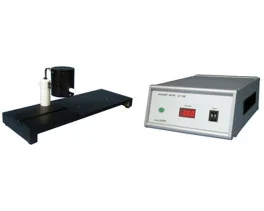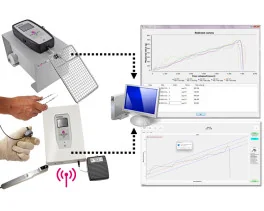Authors
A. Rochetaing, C. Chapon, L. Marescaux, A.L. Bouil, A. Furber et al.
Lab
Université d'Angers, Angers, France
Journal
Canadian Journal of Physiology and Pharmacology
Abstract
This study was designed to demonstrate potential beneficial as well as detrimental effects of lisinopril and spironolactone given in combination. In patients with congestive heart failure or myocardial infarction, the use of angiotensin-converting enzyme (ACE) inhibitors may inhibit aldosterone production. Spironolactone, a specific aldo sterone receptor antagonist may exert other independent and additive effects to those of ACE inhibitors. Given the consequences of aldosterone on ischemic hearts, we evaluated the protective effects of spironolactone or lisinopril and combined spironolactone–lisinopril therapy during low-flow ischemia and reperfusion in isolated rat hearts. Normal and infarcted (left coronary artery ligature) male Wistar rats were submitted to chronic action of drugs (0.8 mg·kg–1·day–1 for lisinopril and 8 or 50 mg·kg–1·day–1 for spironolactone) for 1 month. Hearts were rapidly excised and perfused (constant pressure) for a 40-min period of stabilization followed by a 25-min period of global low-flow ischemia and a 30-min reperfusion. In normal rats, spironolactone decreased ischemic and reperfusion contracture, reduced ventricular tachycardia, suppressed action-potential duration dispersion, and increased reactive hyperemia leading to an improvement of contractile recovery. Lisinopril also decreased ventricular tachycardia and action-potential duration dispersion concomitantly with increased reactive hyperemia and better contractile recovery. These beneficial effects of the drugs were lost when the two treatments were combined (lisinopril and 50 mg·kg–1·day–1 spironolactone), despite a synergistic effect on plasmatic K+ and Mg2+. However, an interaction between the ACE inhibitor and spironolactone potentiating the effects of either drug alone was observed with a lower dose of spironolactone (lisinopril and 8 mg·kg–1·day–1 spironolactone). Similar beneficial effects have been noted in infarcted rat hearts on reactive hyperemia, ventricular tachycardia, and contractile recovery with the combined treatment and for both spironolactone concentrations (8 or 50 mg). Chronic spironolactone treatment produces similar beneficial effects to ACE inhibitor treatment on normal rat hearts during an ischemia-reperfusion protocol. Synergistic effects have been observed with the combined therapy when a lower dose of spironolactone was utilized in normal and infarcted rats. However, in the case of a high dose of spironolactone, the two effective drugs seem to cancel each other but only in normal rats.Key words: spironolactone, ACE inhibitors, ischemia–reperfusion, ventricular arrhythmia, action potentials, coronary flow, congestive heart failure.
BIOSEB Instruments Used:
Non Invasive Pressure Measurement (LE5001)

 Pain - Thermal Allodynia / Hyperalgesia
Pain - Thermal Allodynia / Hyperalgesia Pain - Spontaneous Pain - Postural Deficit
Pain - Spontaneous Pain - Postural Deficit Pain - Mechanical Allodynia / Hyperalgesia
Pain - Mechanical Allodynia / Hyperalgesia Learning/Memory - Attention - Addiction
Learning/Memory - Attention - Addiction Physiology & Respiratory Research
Physiology & Respiratory Research


















 Pain
Pain Central Nervous System (CNS)
Central Nervous System (CNS) Neurodegeneration
Neurodegeneration Sensory system
Sensory system Motor control
Motor control Mood Disorders
Mood Disorders Other disorders
Other disorders Muscular system
Muscular system Joints
Joints Metabolism
Metabolism Cross-disciplinary subjects
Cross-disciplinary subjects CONFERENCES & MEETINGS
CONFERENCES & MEETINGS